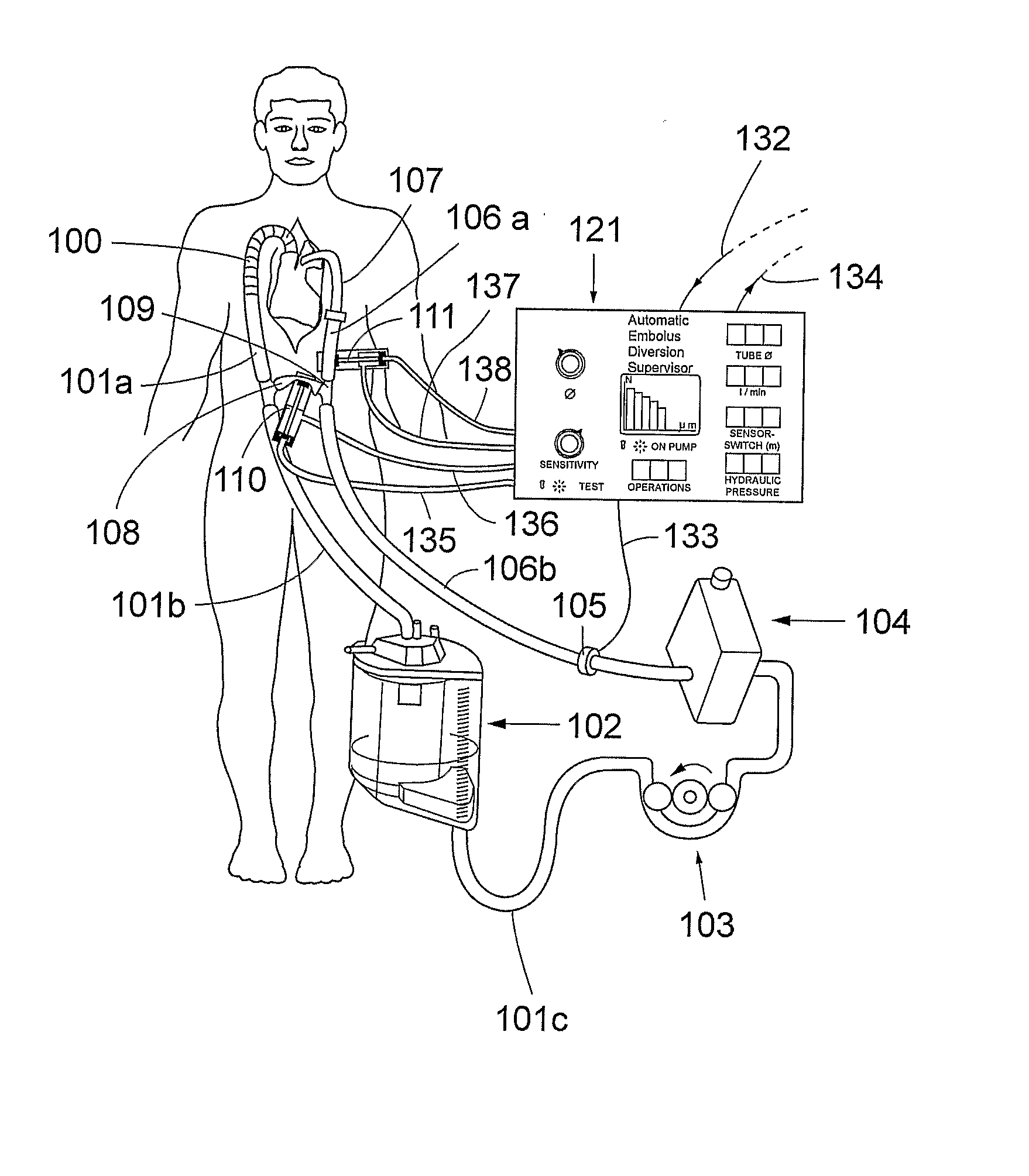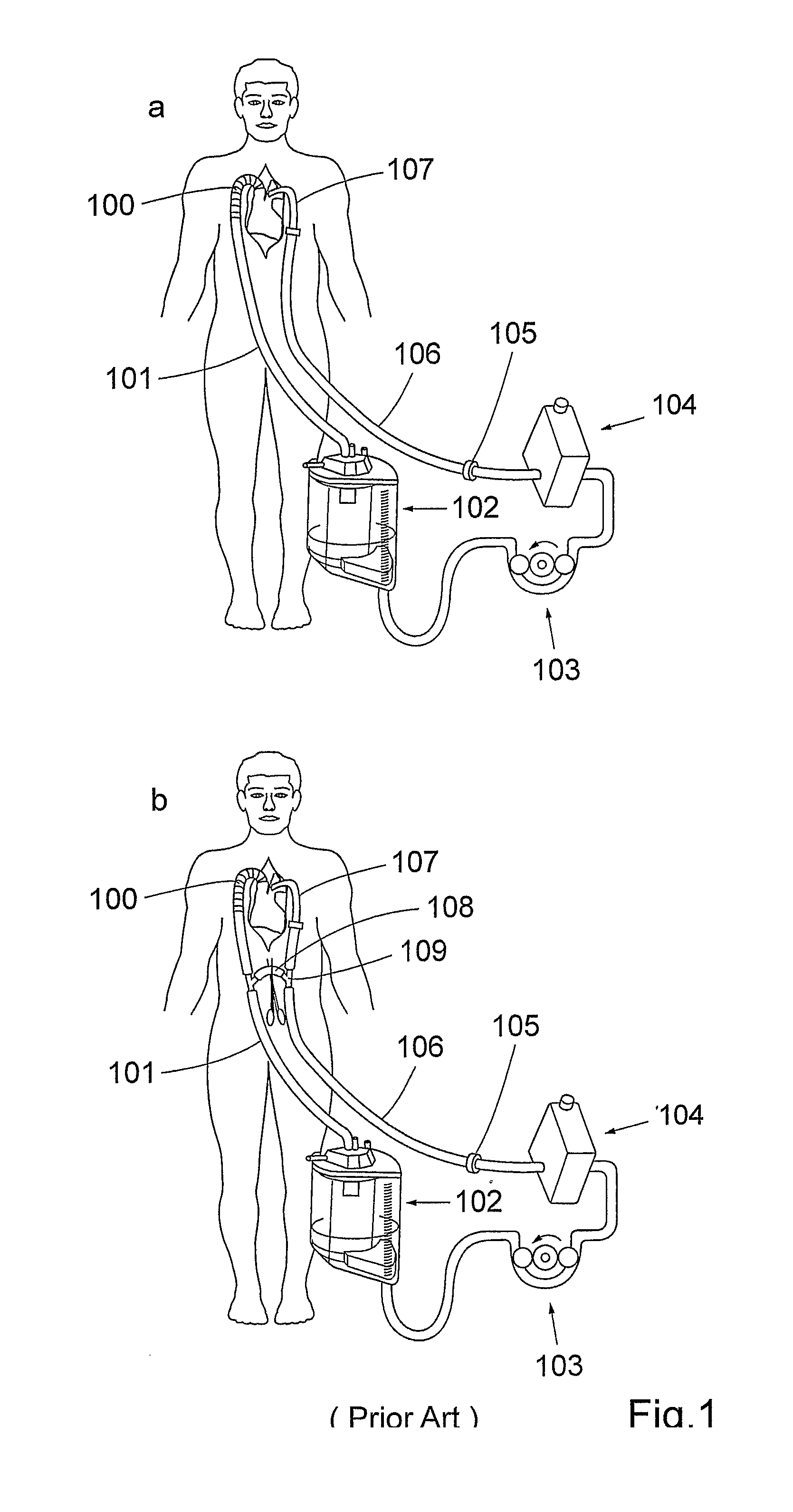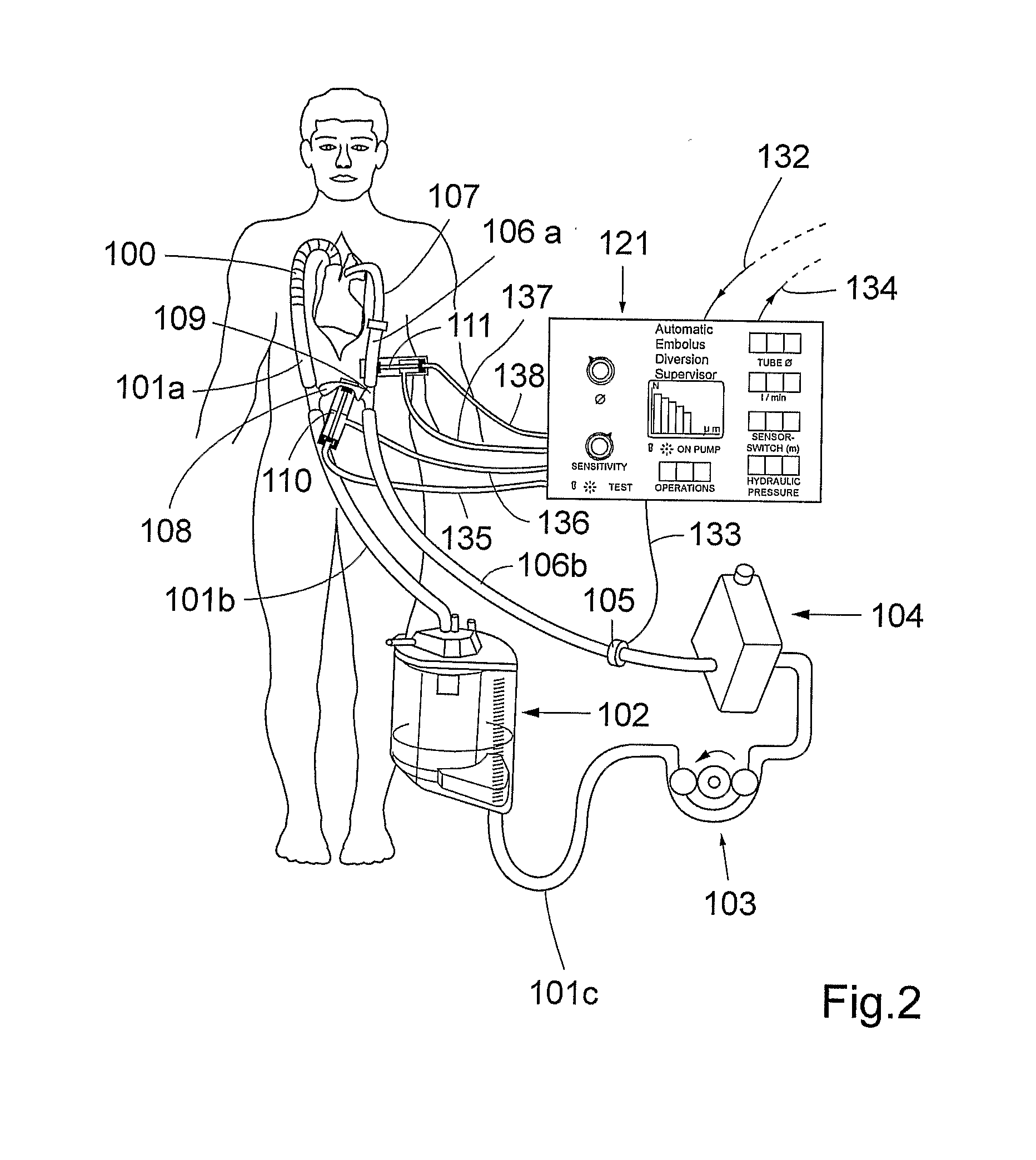Diversion Of Emboli During Fluid Circulation
a technology of fluid circulation and embolism, which is applied in the direction of suction devices, valves, haemofiltration, etc., can solve the problems of increased risk of gaseous emboli, increased risk of embolism, and unobtrusive formation of blood clots and gas bubbles
- Summary
- Abstract
- Description
- Claims
- Application Information
AI Technical Summary
Problems solved by technology
Method used
Image
Examples
first embodiment
[0025]FIG. 2 shows schematically the present invention. A first fluid circuit 100, 101a, 101b, 101c, 102, 103, 104, 106a, 106b, 107, 109 is established between an outlet from a vascular system of a living being and an inlet into said vascular system. As exemplified in FIG. 2, the outlet is realized as an outlet from the vena cava and the heart and the inlet is realized as an inlet into ascending aorta of the patient. Blood can be extracted from the outlet by means of a extraction means, e.g. a cannula, 100 and extracorporeally circulated in said fluid circuit between the outlet and the inlet.
[0026]A second fluid circuit 101b, 101c, 102, 103, 104, 106b, 108, 109 is configured to bypass the inlet and the outlet of the vascular system. As shown in FIG. 2, the body will thus be bypassed by the second fluid circuit. However, it should be understood that the inlet and outlet do not have to be an inlet and an outlet of the same organ or body part, but they can be an inlet and an outlet of ...
third embodiment
[0040]the inventive system is depicted in FIG. 8. In this application the invention is modified to be used in dialysis. The oxygenator is in this situation not needed and a dialysis membrane 140 is added. In dialysis, the venous reservoir may be of a smaller size as compared to the size of the venous reservoir in the previously described embodiments. However, in case a large bubble has been detected and is redirected according to the method of the invention, the venous reservoir should contain enough volume to minimize operational arrests. In FIG. 8 the dialysis catheter 141 entering the body is depicted as a two-lumen veno-venous dialysis catheter, but other arrangements of cannulation the vascular system for dialysis are feasible.
PUM
 Login to view more
Login to view more Abstract
Description
Claims
Application Information
 Login to view more
Login to view more - R&D Engineer
- R&D Manager
- IP Professional
- Industry Leading Data Capabilities
- Powerful AI technology
- Patent DNA Extraction
Browse by: Latest US Patents, China's latest patents, Technical Efficacy Thesaurus, Application Domain, Technology Topic.
© 2024 PatSnap. All rights reserved.Legal|Privacy policy|Modern Slavery Act Transparency Statement|Sitemap



